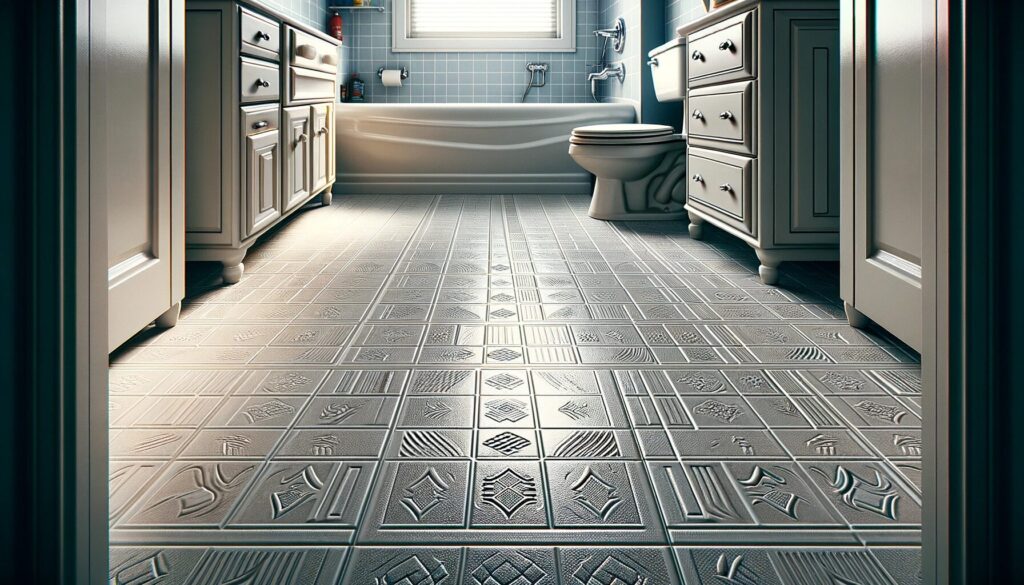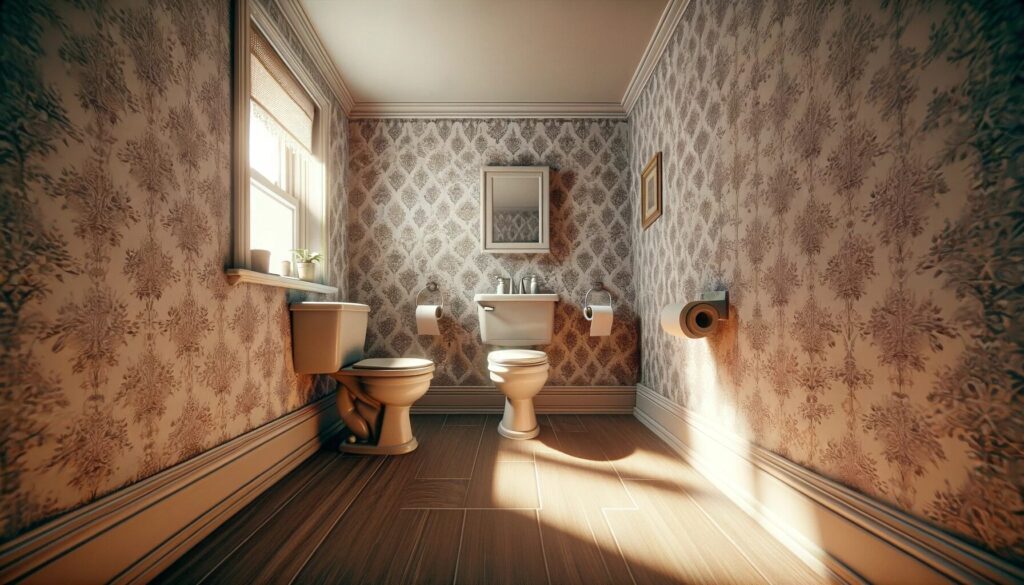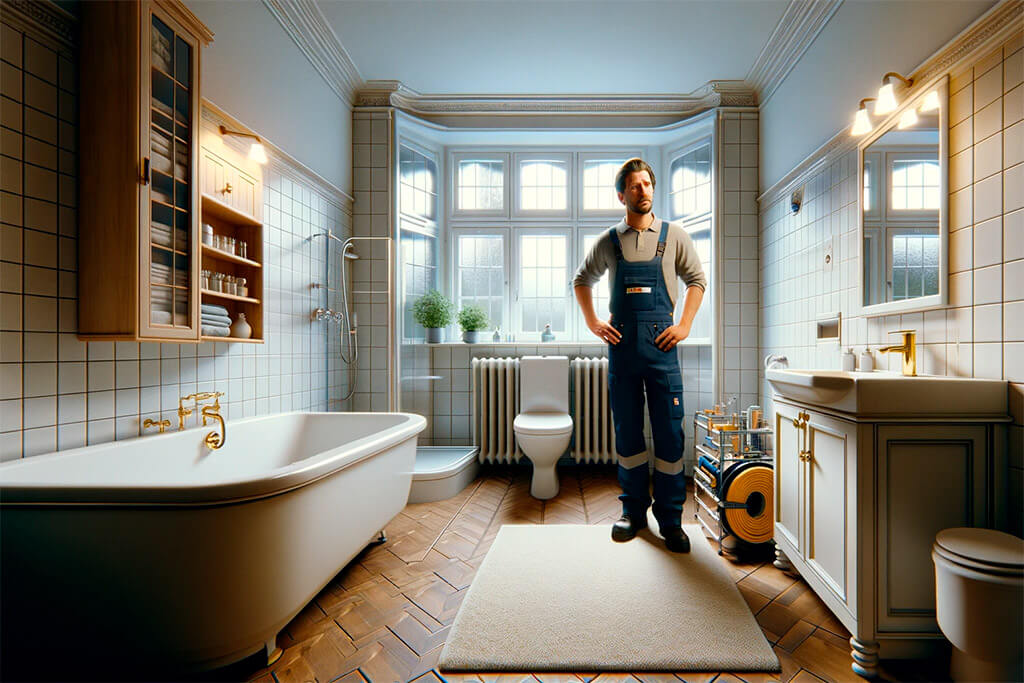When it comes to renovating your small bathroom, selecting the right flooring is a critical decision that can greatly impact both the function and feel of the space. In my years of experience in renovation, I’ve seen how the right flooring choice can transform a cramped, uninviting bathroom into a comfortable and stylish retreat. It’s not just about picking a material that looks good – it’s about finding a flooring solution that maximizes your space, stands up to the humid bathroom environment, and complements the overall design of your home.

Understanding Your Space
Before diving into flooring options, it’s essential to understand the unique dimensions and layout of your small bathroom. Measure your space carefully, considering every nook and cranny. Flooring choices can significantly alter the perception of space – certain materials and patterns can make your bathroom appear larger and more open. The key is to select flooring that complements the size and shape of your bathroom, enhancing its overall ambiance.
Flooring Options for Small Bathrooms
- Tile Flooring
- Pros and Cons: Tile is a classic choice for bathroom flooring, known for its durability and water resistance. However, it can be slippery when wet, and installation can be challenging for the inexperienced DIYer.
- Design Ideas: To create a sense of space in a small bathroom, consider using larger tiles, as fewer grout lines can make the room appear larger. Mosaic or geometric patterns can add visual interest, while light-colored tiles can help brighten a small, dimly lit room.
- Vinyl Flooring
- Benefits: Vinyl flooring is a practical, budget-friendly option for small bathrooms. It’s easy to install and maintain, and it’s comfortable underfoot. Modern vinyl comes in a variety of designs, including ones that mimic more expensive materials like wood or stone.
- Modern Designs: With advancements in printing technology, bathroom vinyl flooring now offers a range of contemporary designs. From realistic wood and stone finishes to bold patterns, vinyl can add a touch of modern elegance to your small bathroom.
- Laminate Flooring
- When to Choose Laminate: Laminate flooring is ideal for those who love the look of hardwood but need a more practical, moisture-resistant option for the bathroom. Opt for laminate flooring specially designed for high-moisture areas.
- Waterproof Options: Many laminate flooring options now come with waterproof or water-resistant features, making them suitable for use in bathrooms. They provide the aesthetic appeal of wood without the risk of water damage.

DIY Installation Tips
Preparing Your Bathroom for New Flooring
First, let’s set the stage for your flooring project. Clear out every fixture in the bathroom. This includes the toilet, vanity, and any movable objects. It’s crucial to work on a blank canvas. Next, examine your subfloor thoroughly. A level and stable subfloor is the foundation of your new flooring. If it’s uneven, take the time to correct it. Accurate measurements of your bathroom are essential for minimizing material waste and ensuring your layout is both efficient and aesthetically pleasing.
Laying Tiles
For tiling, you’ll need a notched trowel, tile cutter, spacers, adhesive, and grout, along with a level to keep things even. Begin by applying adhesive with your trowel at a 45-degree angle for optimal adhesion. Lay your tiles carefully using spacers for uniform gaps. After laying the tiles, let the adhesive set as per the manufacturer’s instructions before applying grout.
Installing Vinyl
Vinyl requires a utility knife, straightedge, adhesive, and a roller. Start by dry laying your vinyl to plan the layout. Once satisfied, apply adhesive and lay the vinyl. A roller is crucial here to firmly bond the vinyl to the subfloor.
Laying Laminate
For laminate flooring, you’ll need a laminate installation kit, a saw, and underlayment. The underlayment acts as a moisture barrier and helps to even out minor subfloor imperfections. Laminate flooring typically clicks together, making installation relatively straightforward. Remember to stagger the seams for better stability and visual appeal.

Easy Maintenance and Durability
For Tile Flooring
Regular cleaning with mild detergent is sufficient for tiles. Harsh chemicals can damage grout, so avoid them. Sealing grout lines every few years will help prevent moisture penetration and staining, extending the life of your tile flooring.
For Vinyl Flooring
Vinyl is low-maintenance, regular sweeping and mopping with a vinyl-specific cleaner are usually enough. Be prompt in cleaning spills to prevent any potential moisture damage.
For Laminate Flooring
Laminate floors should be swept with a soft-bristle broom or a microfiber mop. Damp mopping is acceptable but avoid excessive water. Immediate cleaning of spills is crucial to prevent water damage.
Modern Flooring Trends
Exploring the Latest Trends in Small Bathroom Flooring
In the dynamic world of bathroom renovation, the latest trends focus on creating a personalized space that’s both functional and aesthetically pleasing. Currently, wood-look tiles are a popular choice, offering the warmth of wood without the susceptibility to moisture. Luxury vinyl planks are also gaining traction, providing a cost-effective and versatile option. For those looking to make a bold statement, geometric tiles are a growing trend, offering a variety of patterns that can transform a small bathroom into a visually striking space.
Incorporating Contemporary Designs Without Overwhelming the Space
When dealing with limited square footage, the key to incorporating contemporary designs lies in moderation. Choosing a single focal point, such as a patterned floor, and balancing it with neutral tones elsewhere can create a sense of harmony without overwhelming the space. It’s about finding that sweet spot where design elements complement rather than compete with each other.
Cost-Effective Solutions
Budget-Friendly Flooring Options
In my years of renovating homes, I’ve found that luxury vinyl and laminate flooring offer the best value for money. These materials not only mimic more expensive options like hardwood or stone but are also remarkably durable and easy to install. Ceramic tiles can also be an economical choice, especially if you scout for deals or consider clearance items.
Balancing Quality and Affordability in Your Choice
Finding the balance between cost and quality is key in any renovation project. In some cases, investing a bit more initially in higher-quality materials can result in longer-lasting floors that require less maintenance over time. It’s important to weigh factors such as longevity, maintenance, and aesthetic appeal against the cost to make an informed decision.
FAQ Section
Choosing the right flooring for a small bathroom involves considering moisture resistance, durability, and aesthetic appeal. Porcelain and ceramic tiles are excellent for their water-resistance and durability. Vinyl and specially designed laminate flooring can offer wider design choices while still being suitable for moist environments.
The right flooring can significantly impact the perception of space. Opt for lighter colors to create a sense of openness. Laying tiles diagonally can give an illusion of depth. Using the same tiles on the floor and walls can create a seamless look that visually expands the room.
Yes, especially with materials like vinyl and laminate, which are user-friendly for DIY installations. There are numerous resources and tutorials available online. However, the key to success is in the preparation – ensure you have the necessary tools and understand the process before beginning.
Regular maintenance is crucial for any flooring type. For tiles, avoid harsh chemicals and reseal grout periodically. For vinyl and laminate, regular sweeping and prompt spill management are key. Avoid excessive water on laminate floors to prevent damage.
Laminate flooring can be used in bathrooms, but it’s important to choose options that are designed for high moisture levels. These will typically have better water resistance. It’s also wise to take extra precautions, such as using bath mats near the sink and tub to protect the flooring from water.
